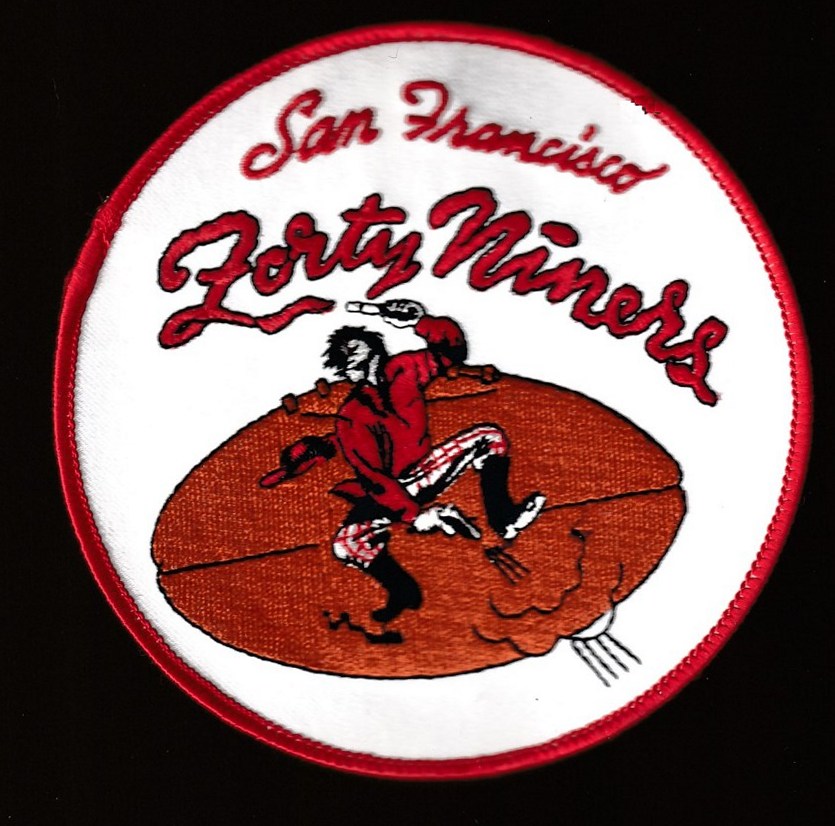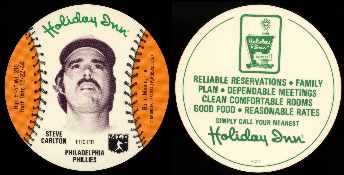San Francisco FORTY NINERS Patch (5 inch)
Hundreds of 49ers patches listed on eBay but NONE of this one.

Please wander around the website for more info, prices, values & images
on vintage baseball, football, basketball, hockey, sport and non-sports cards.
Values of Team Autographed/Signed Baseballs
The value of Autographed Team Balls depends on several items
including:
Click for our current
Autographed/Signed Team Baseball inventory
* The Team or Players * Baseballs signed by more popular teams like the Yankees or Mets tend to be more valuable. Also balls with autographs from popular Hall of Famers increase the value. Some team balls like the 1970's Cincinatti Reds or early Yankees balls have numerous Hall-of-Famers. * Condition of Baseball & Signatures * * Number of Autographs * For a ball to be considered a AUTOGRAPHED TEAM BALL it needs to have the autographs of the Manager (often on the sweet spot), all starters and a good number of other players. Obviously, the more autographs the better. * Authentication * Unfortunately in todays world, it's often best to be sure. Companies like PSA/DBA and UDA (Upper Deck Authenticated), JSA (James Spence) & Beckett provide authentication and Certificates of Authenticity (COA) thet can greatly increase a ball's value. Unfortunately, the cost for verification of team balls often is higher than the cost of the balls themselves. * Significance * Autographed team baseballs from pennant winners and championship teams tend to have much higher values. |


1977 Holiday Inn MSA DiscsClick for complete 1977 Holiday Inn MSA Baseball Discs Checklist, Values & Info Note: You may be on that page right now. |

O-Pee-Chee (OPC) based in Ontario Canada, is mostly thought of as the Canadian version of Topps but it actually pre-dates Topps by many years.
In 1933, OPC issued their first sports card set, the V304 Hockey cards and is currently in the tens of thousands. Their first baseball set was issued in 1937. It was similar to the 1934 Goudeys and Batter-Ups and the top player was Joe Dimaggio.
O-Pee-Chee created baseball card sets similar to TOpps from 1965 into the 1990's. At first OPC sets were much smaller than Topps and included just the first few series. Fronts & backs were nearly identical but with a small "Printed in Canada" on the back and the card stock was slightly different.
Baseball being much less popular in Canada, OPC print runs of their early years were between 1% and 10% of Topps making them exceedingly scarce !!!
Starting in 1970, Canadian legislation demanded all items produced in Canada
carry both French & English so OPC baseball cards became bilingual with both
languages included.
Other OPC differences include:
1971, OPC even changed the back design to a much more
interesting back and also offered 14 different card photos not in the Topps set.
1972 OPC included a card of Gil Hodges mentioning his death that was
not a part of the Topps set.
1974 OPC did not include any "Washington Nationals" variations.
1977 the card format remained like Topps but almost 1/3 of the OPC set had
different poses/images than Topps.
In late 1970's, OPC card fronts appeared similar to Topps but sometimes
included traded information saying "Now with XXXX". They were able to do
this as the OPC cards were printed much later into the season.
